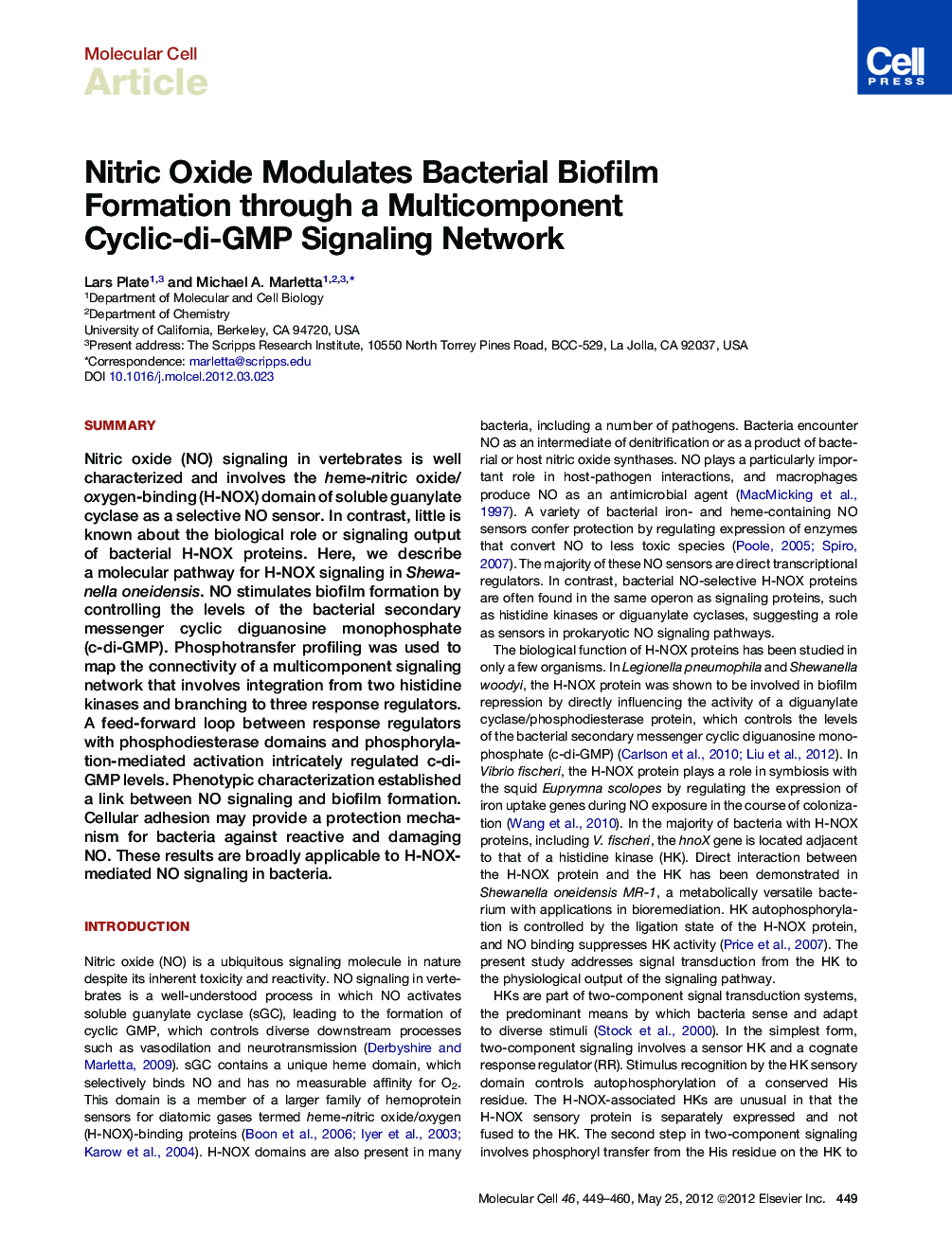| کد مقاله | کد نشریه | سال انتشار | مقاله انگلیسی | نسخه تمام متن |
|---|---|---|---|---|
| 1996583 | 1065491 | 2012 | 12 صفحه PDF | دانلود رایگان |

SummaryNitric oxide (NO) signaling in vertebrates is well characterized and involves the heme-nitric oxide/oxygen-binding (H-NOX) domain of soluble guanylate cyclase as a selective NO sensor. In contrast, little is known about the biological role or signaling output of bacterial H-NOX proteins. Here, we describe a molecular pathway for H-NOX signaling in Shewanella oneidensis. NO stimulates biofilm formation by controlling the levels of the bacterial secondary messenger cyclic diguanosine monophosphate (c-di-GMP). Phosphotransfer profiling was used to map the connectivity of a multicomponent signaling network that involves integration from two histidine kinases and branching to three response regulators. A feed-forward loop between response regulators with phosphodiesterase domains and phosphorylation-mediated activation intricately regulated c-di-GMP levels. Phenotypic characterization established a link between NO signaling and biofilm formation. Cellular adhesion may provide a protection mechanism for bacteria against reactive and damaging NO. These results are broadly applicable to H-NOX-mediated NO signaling in bacteria.
Graphical AbstractFigure optionsDownload high-quality image (111 K)Download as PowerPoint slideHighlights
► A complex multicomponent bacterial H-NOX signaling network was mapped
► EAL response regulator phosphorylation stimulated c-di-GMP hydrolysis activity
► A degenerate HD-GYP response regulator inhibited the EAL response regulator
► NO induced biofilm formation through c-di-GMP modulation by the signaling network
Journal: - Volume 46, Issue 4, 25 May 2012, Pages 449–460